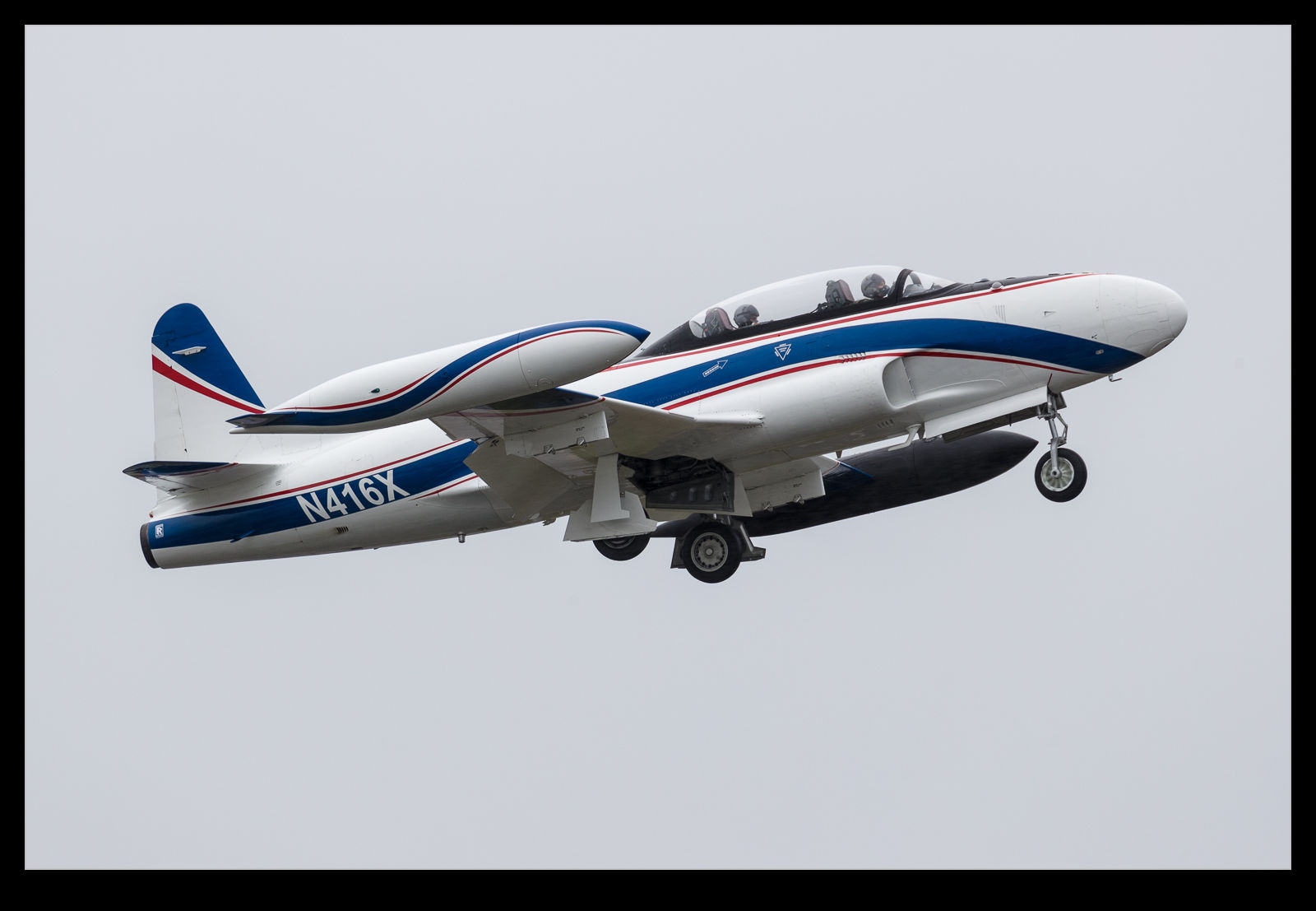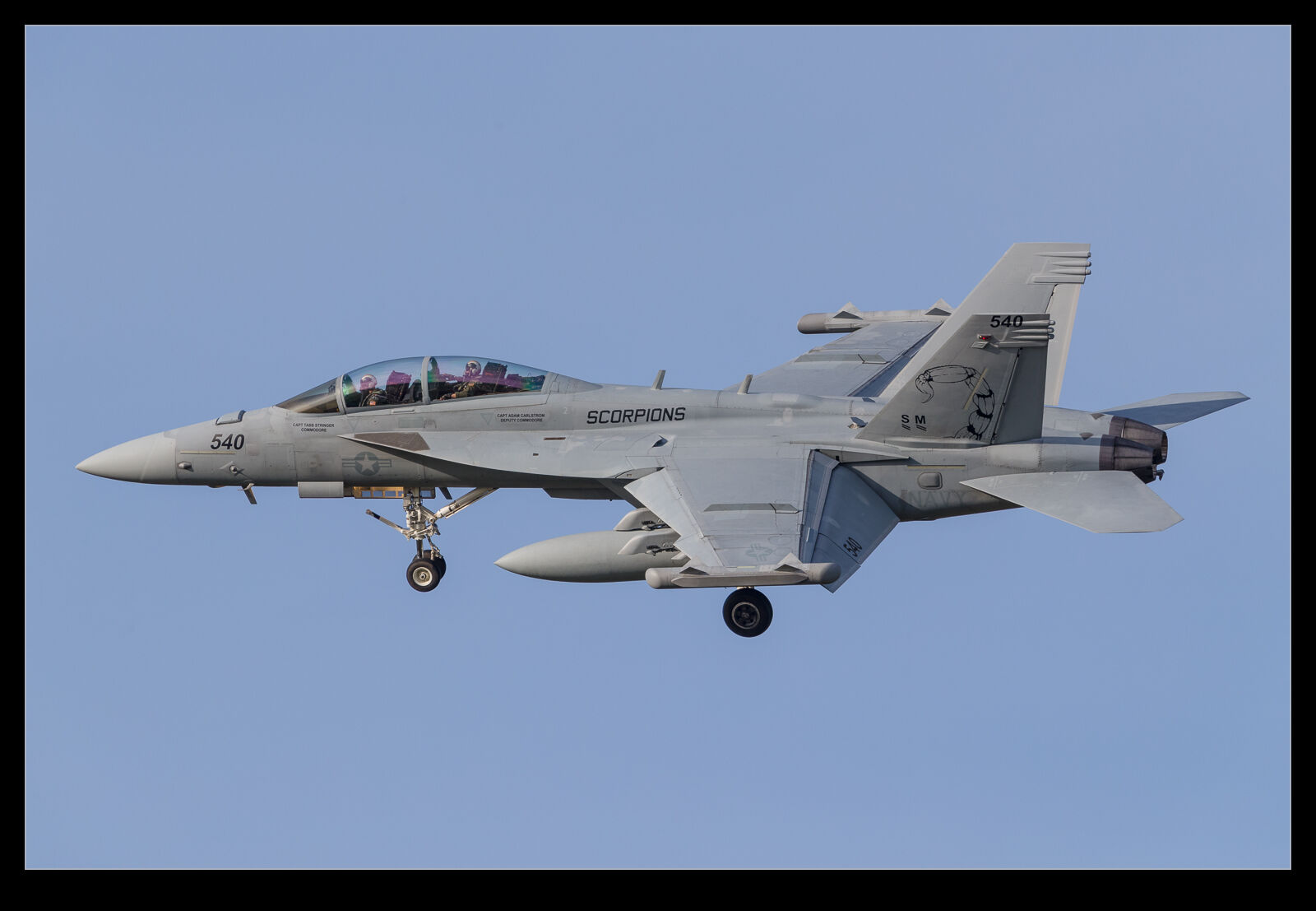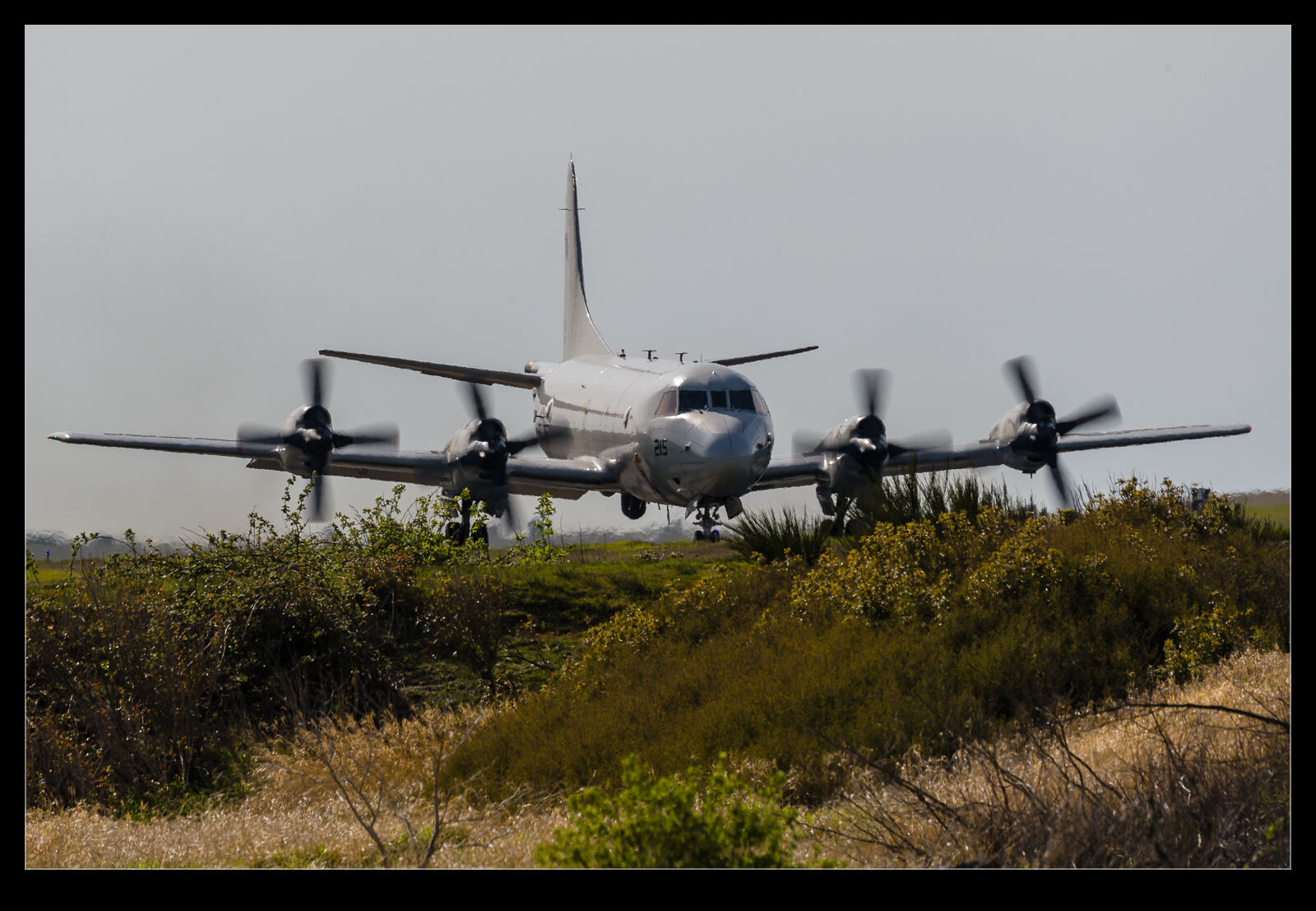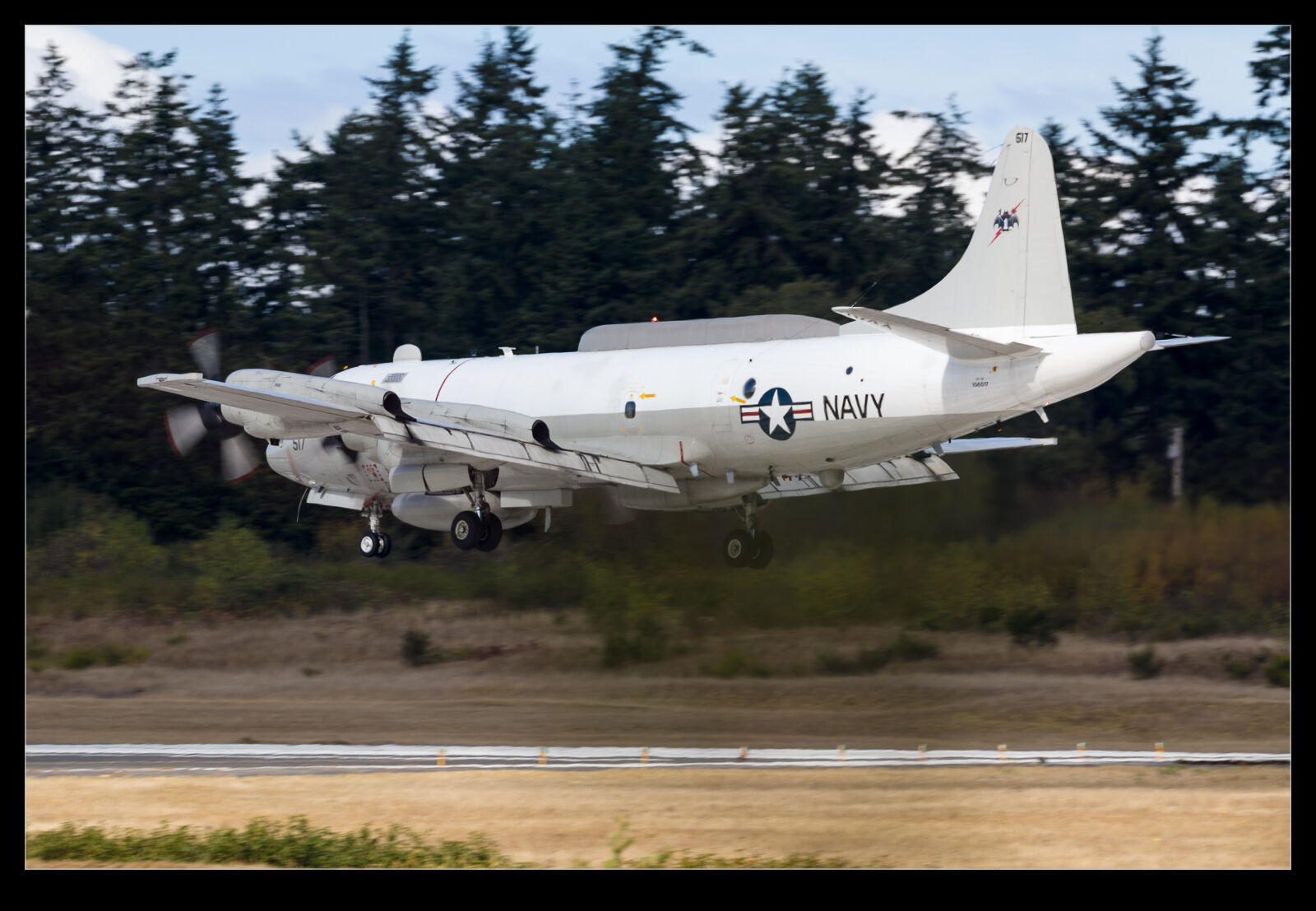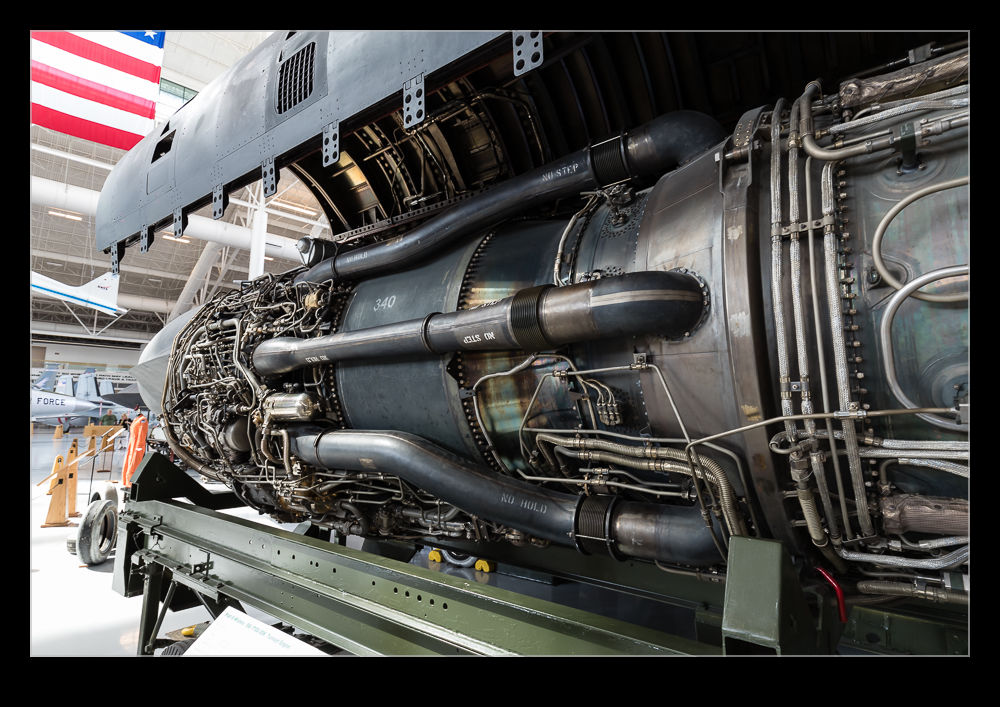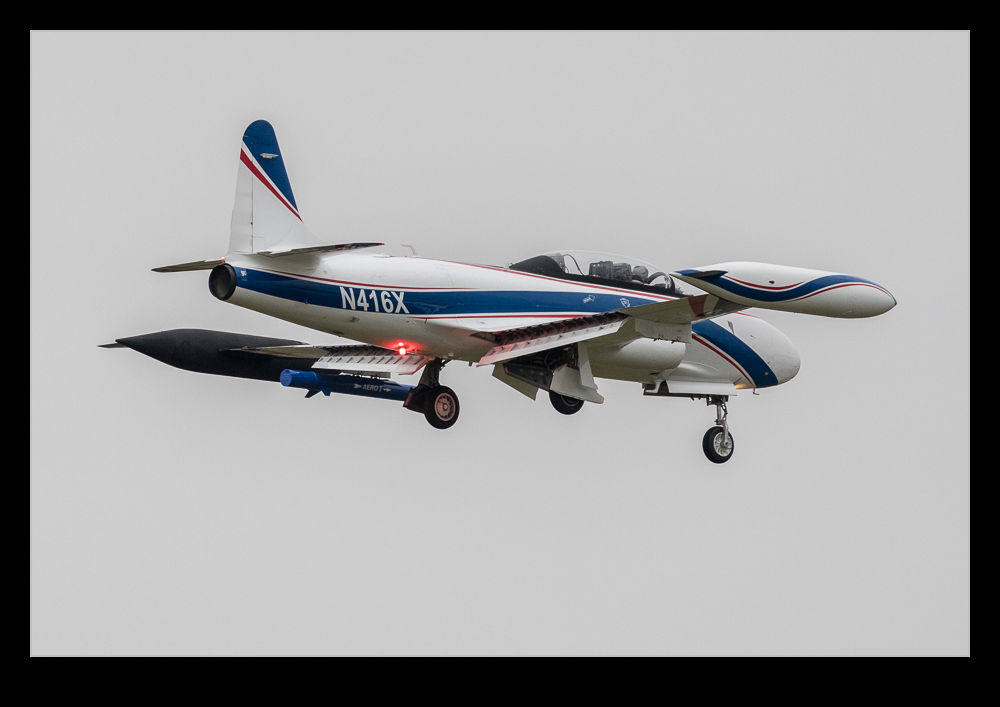 My inability to see a Boeing T-33 jet in nice conditions continues. I was at Boeing Field when one of the T-33s was taking off in support of a Pegasus test mission. The weather was crappy with rain and a heavy overcast. I thought that this was not going to work well but sometimes bad weather provides good opportunities so I gave it a go. Besides, I don’t see them enough to pass it by. As it turned out, the flat conditions and the dampness made the jet show up nicely against the background when it was still low on climb out. Once it was against the sky, things weren’t so great but it turned out a lot better than I expected.
My inability to see a Boeing T-33 jet in nice conditions continues. I was at Boeing Field when one of the T-33s was taking off in support of a Pegasus test mission. The weather was crappy with rain and a heavy overcast. I thought that this was not going to work well but sometimes bad weather provides good opportunities so I gave it a go. Besides, I don’t see them enough to pass it by. As it turned out, the flat conditions and the dampness made the jet show up nicely against the background when it was still low on climb out. Once it was against the sky, things weren’t so great but it turned out a lot better than I expected.
Tag Archives: lockheed
The End of the Day is Always Better
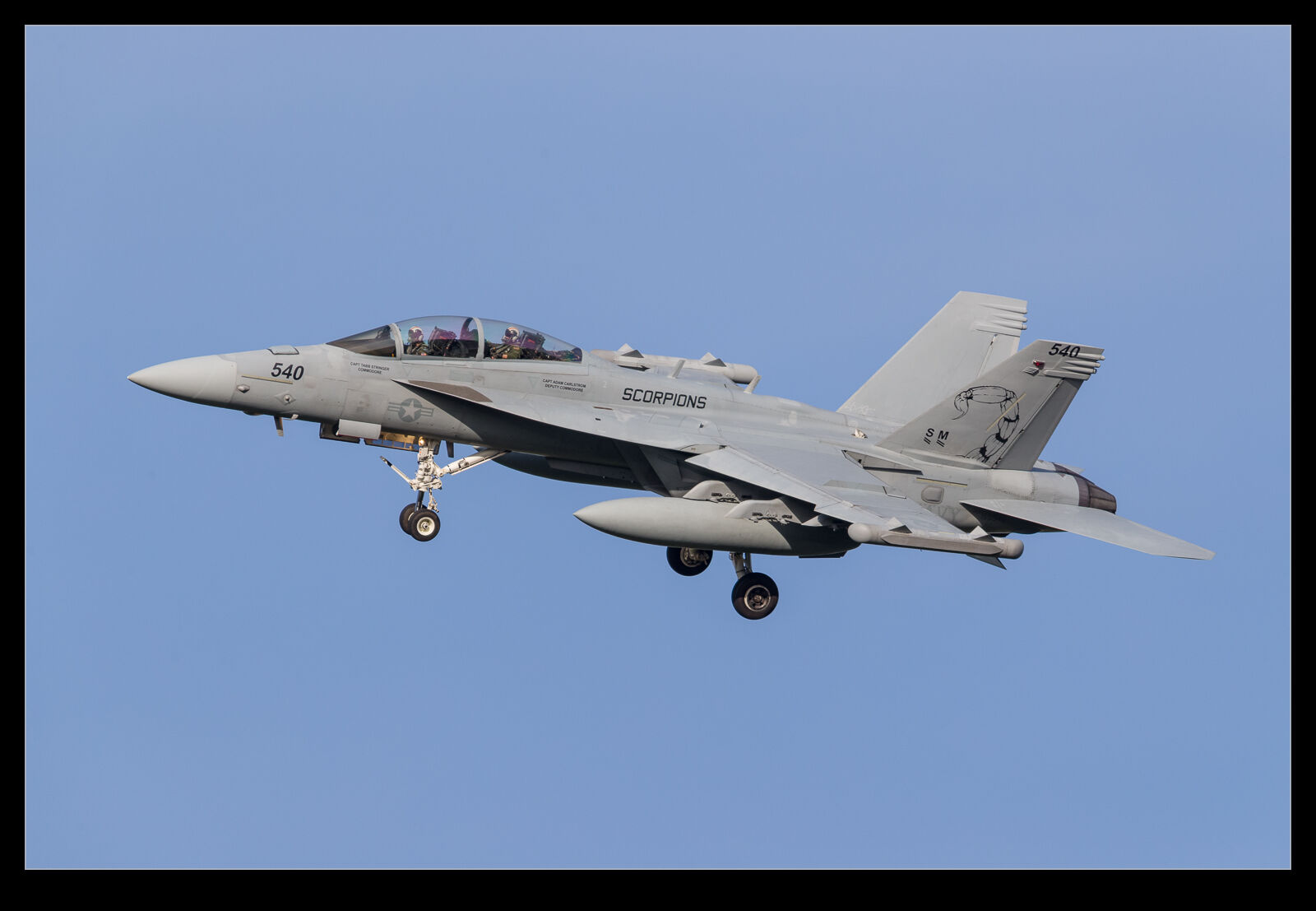 How many times in this blog have I commented on the nice light at the end of the day being the provider of my best shots. It isn’t just about the shot though. Stuff just looks better (hence the better shots) when the sun is low. Mark and I had spent a good day at Coupeville and then at Ault Field but, as the evening was beginning to draw in, we knew a few jets had launched earlier and were due back. As a result, we anticipated some nice arrivals. Mark had also scoped out a better spot for the final turn the jets would be making.
How many times in this blog have I commented on the nice light at the end of the day being the provider of my best shots. It isn’t just about the shot though. Stuff just looks better (hence the better shots) when the sun is low. Mark and I had spent a good day at Coupeville and then at Ault Field but, as the evening was beginning to draw in, we knew a few jets had launched earlier and were due back. As a result, we anticipated some nice arrivals. Mark had also scoped out a better spot for the final turn the jets would be making.
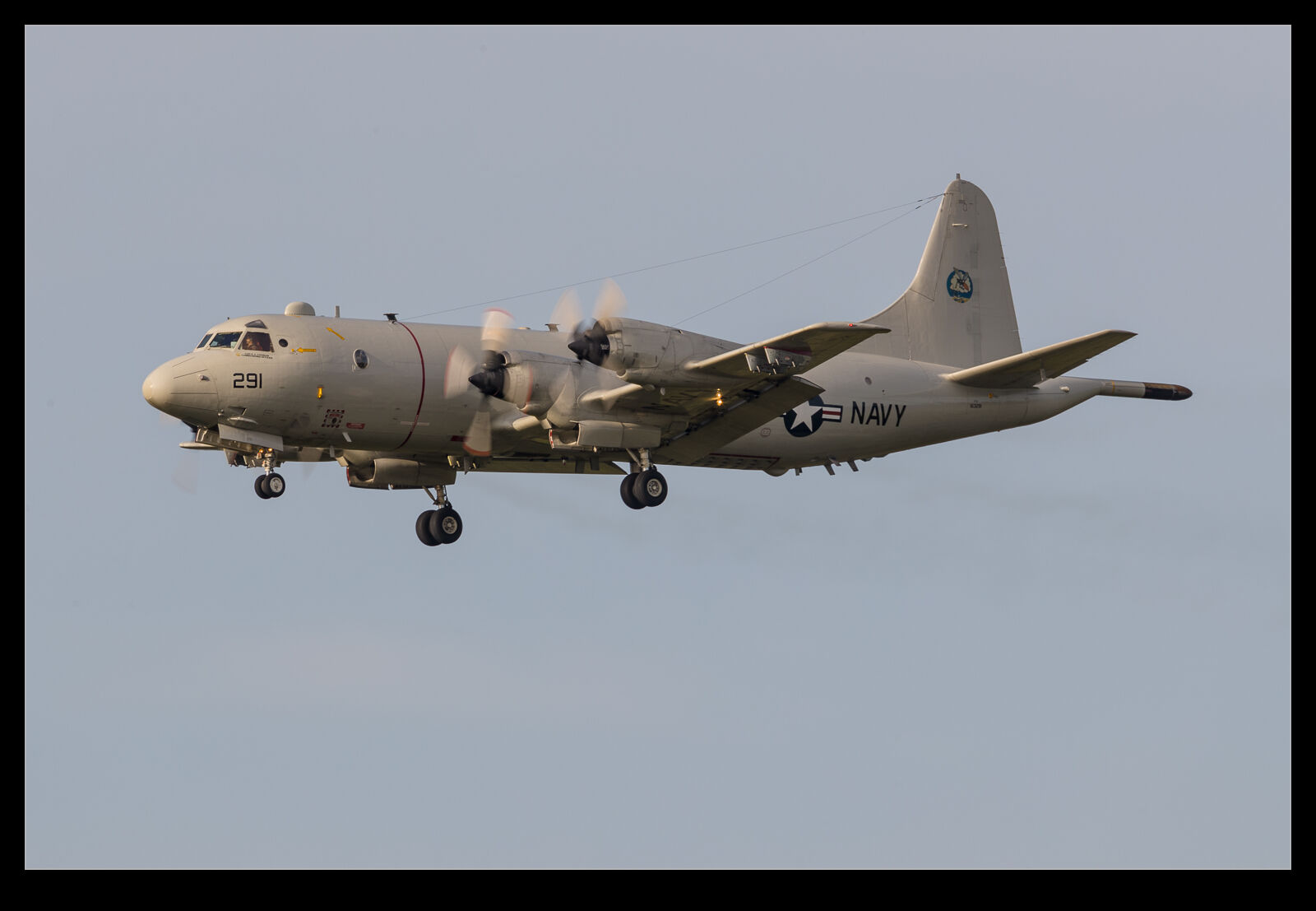 It wasn’t long before we heard some calls on the approach frequency and so we headed to the new location. Our first trade was not the jets we had expected though. Some maritime patrol training was done and a couple of aircraft were making straight in approaches. A P-8 and a P-3 were welcome additions. They may not have been flying particularly interesting approaches but we would have taken them at any time and in this light all was good.
It wasn’t long before we heard some calls on the approach frequency and so we headed to the new location. Our first trade was not the jets we had expected though. Some maritime patrol training was done and a couple of aircraft were making straight in approaches. A P-8 and a P-3 were welcome additions. They may not have been flying particularly interesting approaches but we would have taken them at any time and in this light all was good.
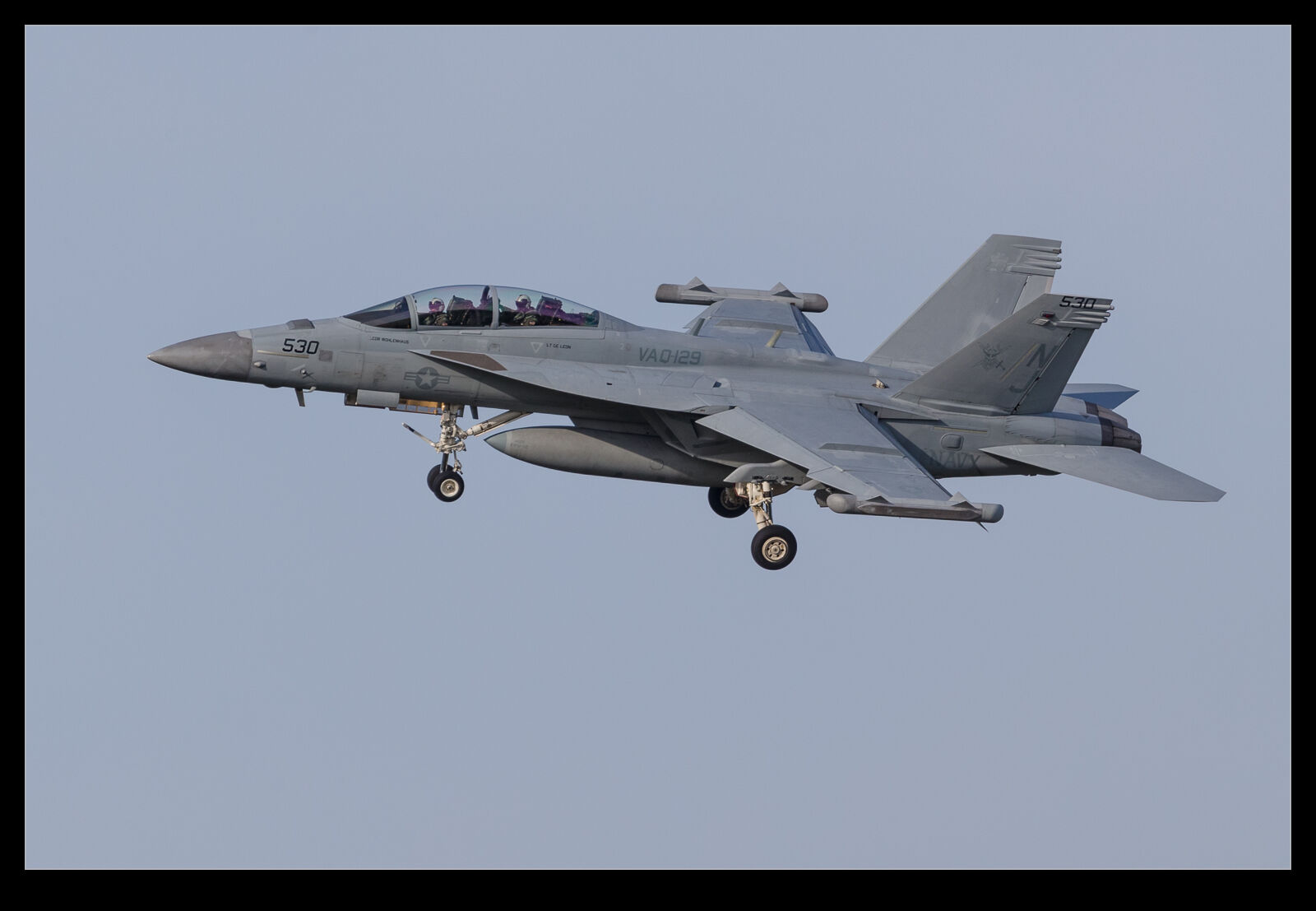 Then the Growlers showed up. The flew some nice curving approaches around us and the evening light was illuminating their topsides in a great way. Clearly these were going to be the shots of the day that we were most happy with. Not only that but they did the decent thing and didn’t land straight away. Instead, a couple of patterns meant we got a good chance to get some shots of them. Once they were down, the radio was quiet and we both had drives home to make so we called it a day. (Sadly, as I got on to I-5 to head south, a C-5 flew over me heading in what appeared to be the direction of Whidbey. That would have arrived in gorgeous light as it looked really nice as it passed over me!)
Then the Growlers showed up. The flew some nice curving approaches around us and the evening light was illuminating their topsides in a great way. Clearly these were going to be the shots of the day that we were most happy with. Not only that but they did the decent thing and didn’t land straight away. Instead, a couple of patterns meant we got a good chance to get some shots of them. Once they were down, the radio was quiet and we both had drives home to make so we called it a day. (Sadly, as I got on to I-5 to head south, a C-5 flew over me heading in what appeared to be the direction of Whidbey. That would have arrived in gorgeous light as it looked really nice as it passed over me!)
P-3s Coming Out of the Sun
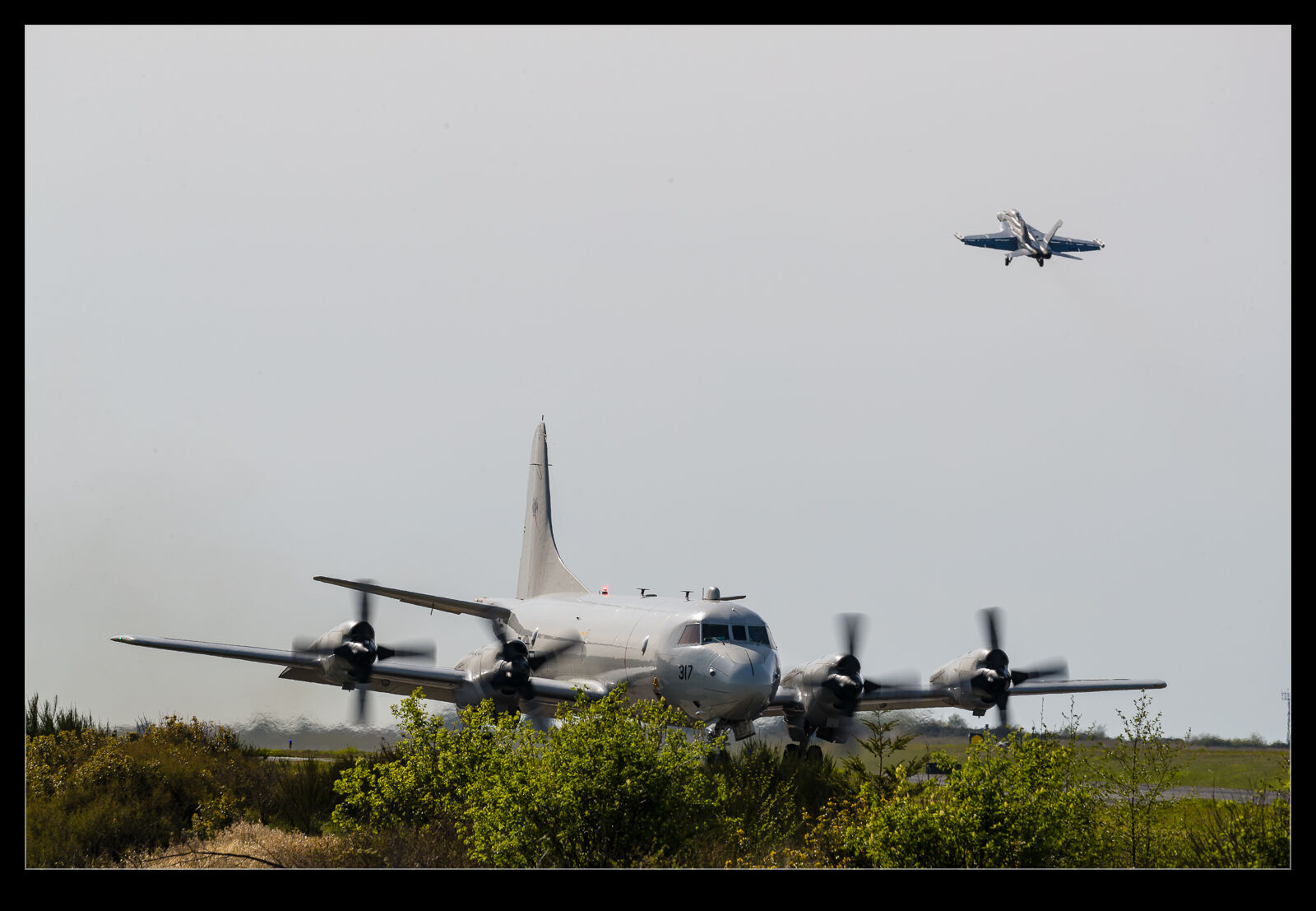 When Ault Field is operating on 25, the aircraft taxi out to the departure end along a taxiway that gradually brings them into view from the crash gate. The sound will usually precede them and, in the case of the P-3s, that is a pretty distinctive sound. As the day wears on, they are coming at you out of the sun so a bit more silhouetted but that helps to make them look more interesting. They pull around to the hold point, sometimes mixing in with the Growlers before departing off to the west. This is a sight that will soon be gone as the P-8s take over.
When Ault Field is operating on 25, the aircraft taxi out to the departure end along a taxiway that gradually brings them into view from the crash gate. The sound will usually precede them and, in the case of the P-3s, that is a pretty distinctive sound. As the day wears on, they are coming at you out of the sun so a bit more silhouetted but that helps to make them look more interesting. They pull around to the hold point, sometimes mixing in with the Growlers before departing off to the west. This is a sight that will soon be gone as the P-8s take over.
Was This Sensor Once Highly Classified?
 The SR-71 Blackbird provided a reconnaissance platform that was unmatched. It would have been pretty high in the sensitivity list when it came to its sensors and capabilities. Now the jets are all retired. The example that is in the Evergreen Aerospace Museum has one of the sensors extracted from the sensor bay and mounted on a stand in front of the aircraft. I imagine there was a time when this was something that would not be available for me to look at but now, I guess, this is just another obsolete piece of tech.
The SR-71 Blackbird provided a reconnaissance platform that was unmatched. It would have been pretty high in the sensitivity list when it came to its sensors and capabilities. Now the jets are all retired. The example that is in the Evergreen Aerospace Museum has one of the sensors extracted from the sensor bay and mounted on a stand in front of the aircraft. I imagine there was a time when this was something that would not be available for me to look at but now, I guess, this is just another obsolete piece of tech.
EP-3 Aries
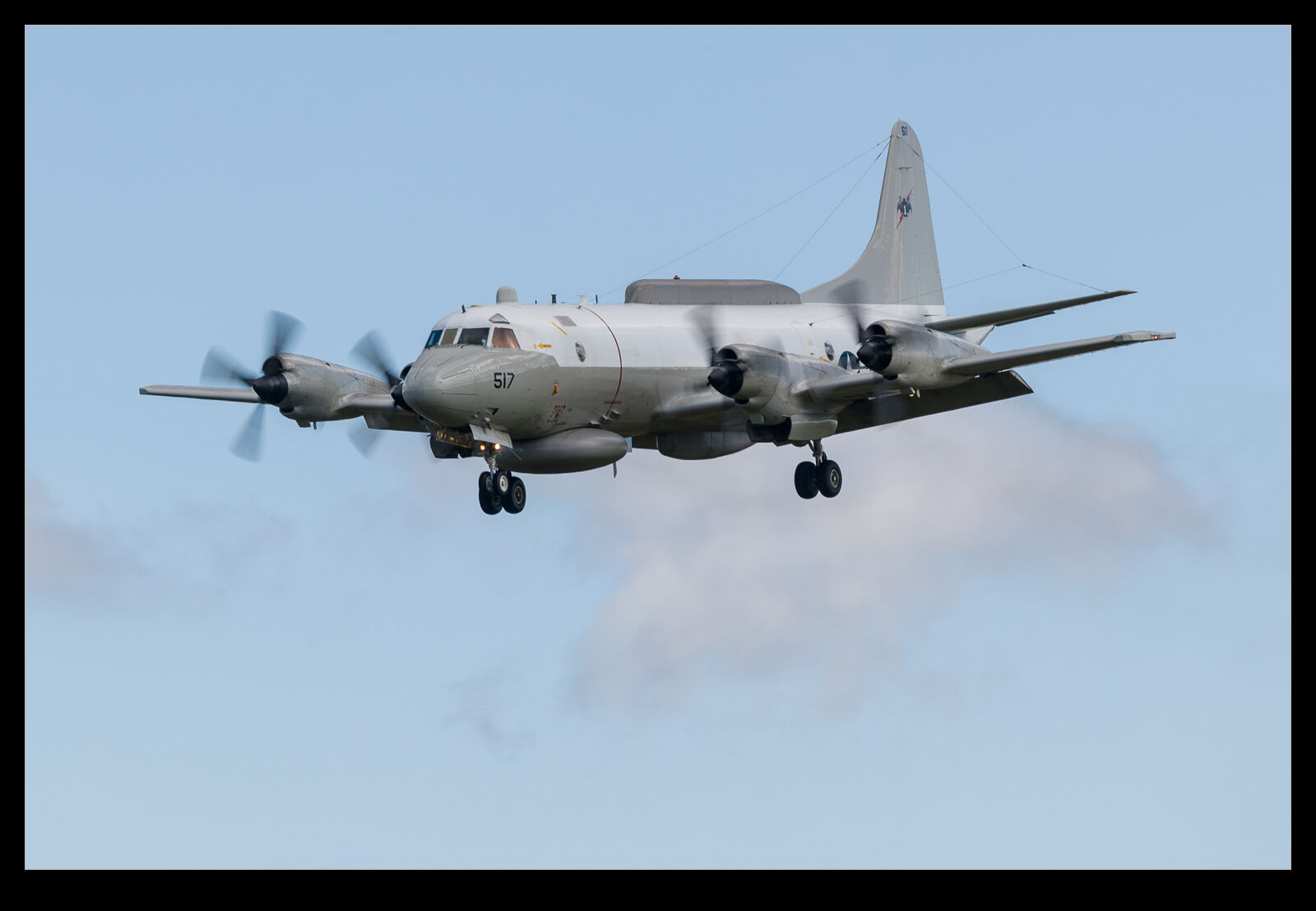 P-3 hunting was part of the plan when Paul and I headed to NAS Whidbey Island. We had some success. There was a nice bit of icing on the cake for us. An EP-3E showed up too. The EP-3 has a nice selection of large radomes added to the airframe to cover the wide variety of sensors that this type has to fulfill its role of listening to transmissions around the world. I don’t know how long the EP-3 has once the P-3s are gone from fleet service so getting one was a definite plus.
P-3 hunting was part of the plan when Paul and I headed to NAS Whidbey Island. We had some success. There was a nice bit of icing on the cake for us. An EP-3E showed up too. The EP-3 has a nice selection of large radomes added to the airframe to cover the wide variety of sensors that this type has to fulfill its role of listening to transmissions around the world. I don’t know how long the EP-3 has once the P-3s are gone from fleet service so getting one was a definite plus.
Build a Blackbird Pano
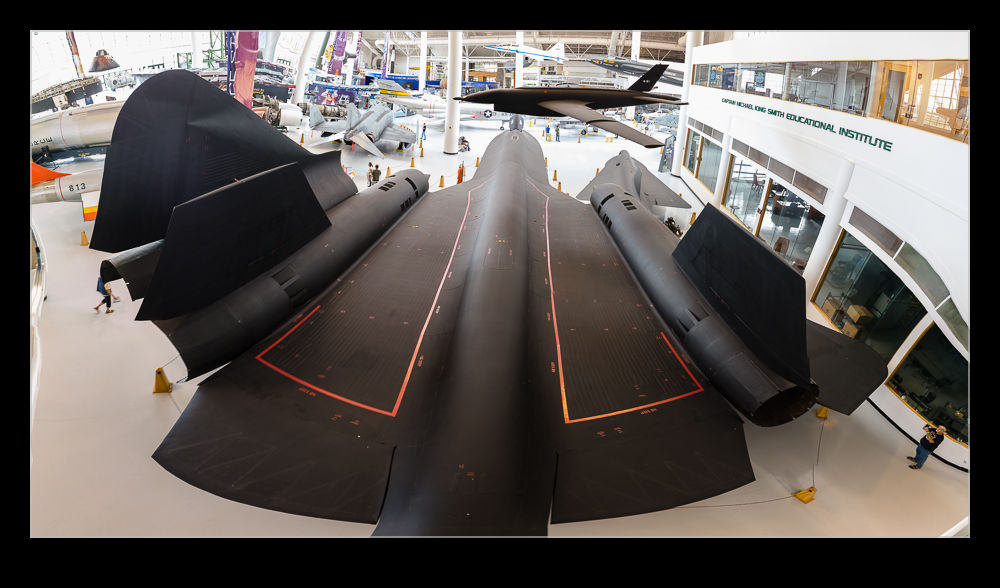 While I was wandering around by the SR-71 at Evergreen and taking some pictures, one of the museum docents approached me and asked if I wanted to go upstairs. I had seen the stairs and a gallery but the signage showed it as closed off. If I had an invitation, I wasn’t going to say no, though! The location put you above the Blackbird giving a great perspective that you don’t normally get. However, I was pretty close in so the lens I had was still not wide enough. Time for a pano instead. I took a sequence of shots to try and cover the whole thing as best I could. Then it was up to the software to do the stitching. The above shot was the result.
While I was wandering around by the SR-71 at Evergreen and taking some pictures, one of the museum docents approached me and asked if I wanted to go upstairs. I had seen the stairs and a gallery but the signage showed it as closed off. If I had an invitation, I wasn’t going to say no, though! The location put you above the Blackbird giving a great perspective that you don’t normally get. However, I was pretty close in so the lens I had was still not wide enough. Time for a pano instead. I took a sequence of shots to try and cover the whole thing as best I could. Then it was up to the software to do the stitching. The above shot was the result.
Blackbird Motor
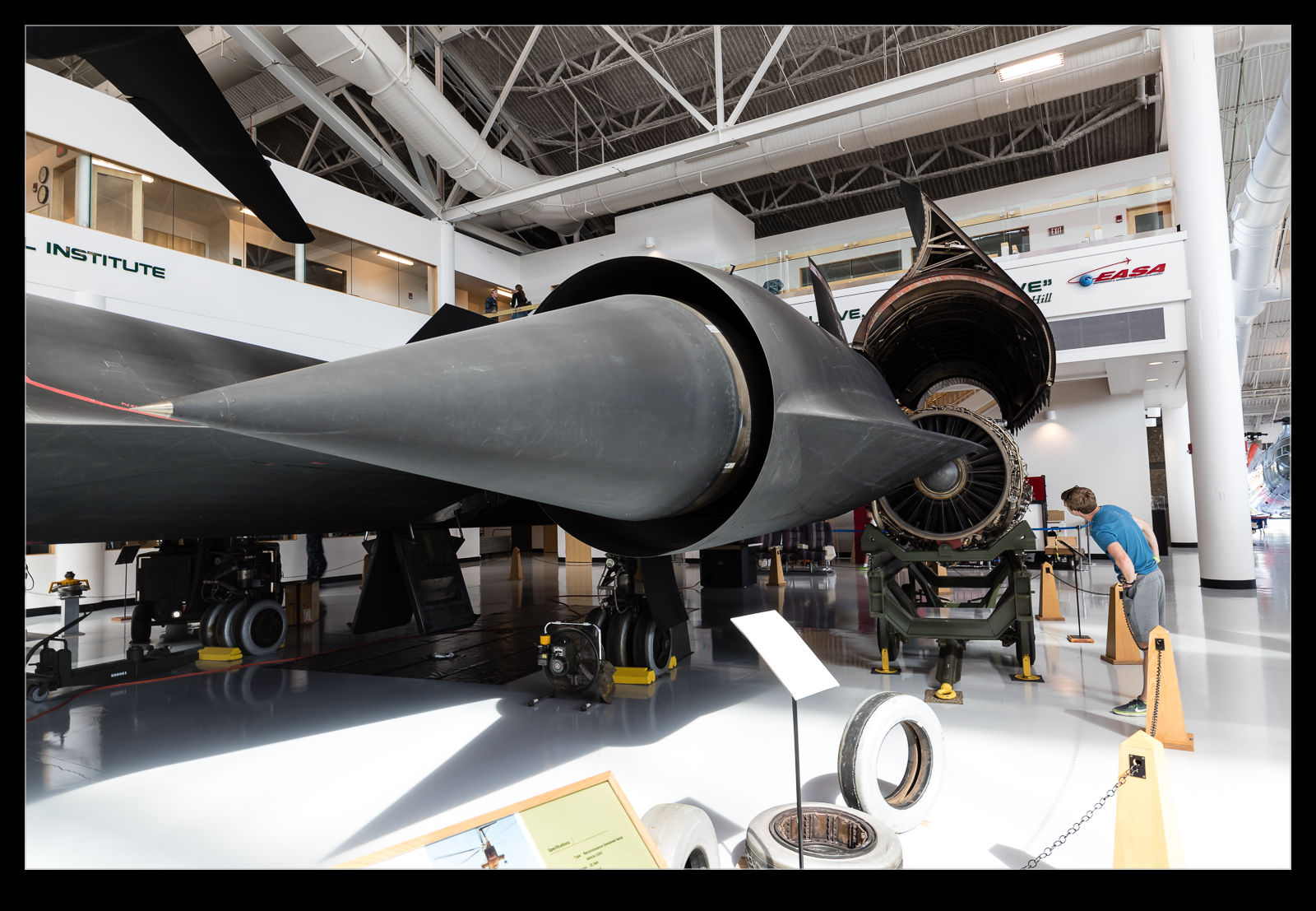 The SR-71 that is located in the Evergreen Aerospace Museum is configured to give some interesting views of the aircraft. One side of the aircraft is opened up to show the engine. The whole of the outer portion of the wing folds up to give access to the engine. I had no idea that was the way it operated until I saw this plane. It does show the engine configuration nicely. At the high supersonic speeds, there is a bypass process whereby a lot of the flow is taken around the core. The pipes for this can be clearly seen along the side of the engine.
The SR-71 that is located in the Evergreen Aerospace Museum is configured to give some interesting views of the aircraft. One side of the aircraft is opened up to show the engine. The whole of the outer portion of the wing folds up to give access to the engine. I had no idea that was the way it operated until I saw this plane. It does show the engine configuration nicely. At the high supersonic speeds, there is a bypass process whereby a lot of the flow is taken around the core. The pipes for this can be clearly seen along the side of the engine.
A Pair of T-33s, How Nice
 A previous post talked about wanting to get the Boeing T-33s after having seen one of them flying over my office. I saw that two T-33s were actually operating out of St Louis. They appeared to be operating with the Catfish 757 testbed. A couple of days later I happened to see that the two jets were operating cross country, presumably en route back from St Louis to Seattle. Sure enough, that was what they were doing.
A previous post talked about wanting to get the Boeing T-33s after having seen one of them flying over my office. I saw that two T-33s were actually operating out of St Louis. They appeared to be operating with the Catfish 757 testbed. A couple of days later I happened to see that the two jets were operating cross country, presumably en route back from St Louis to Seattle. Sure enough, that was what they were doing.
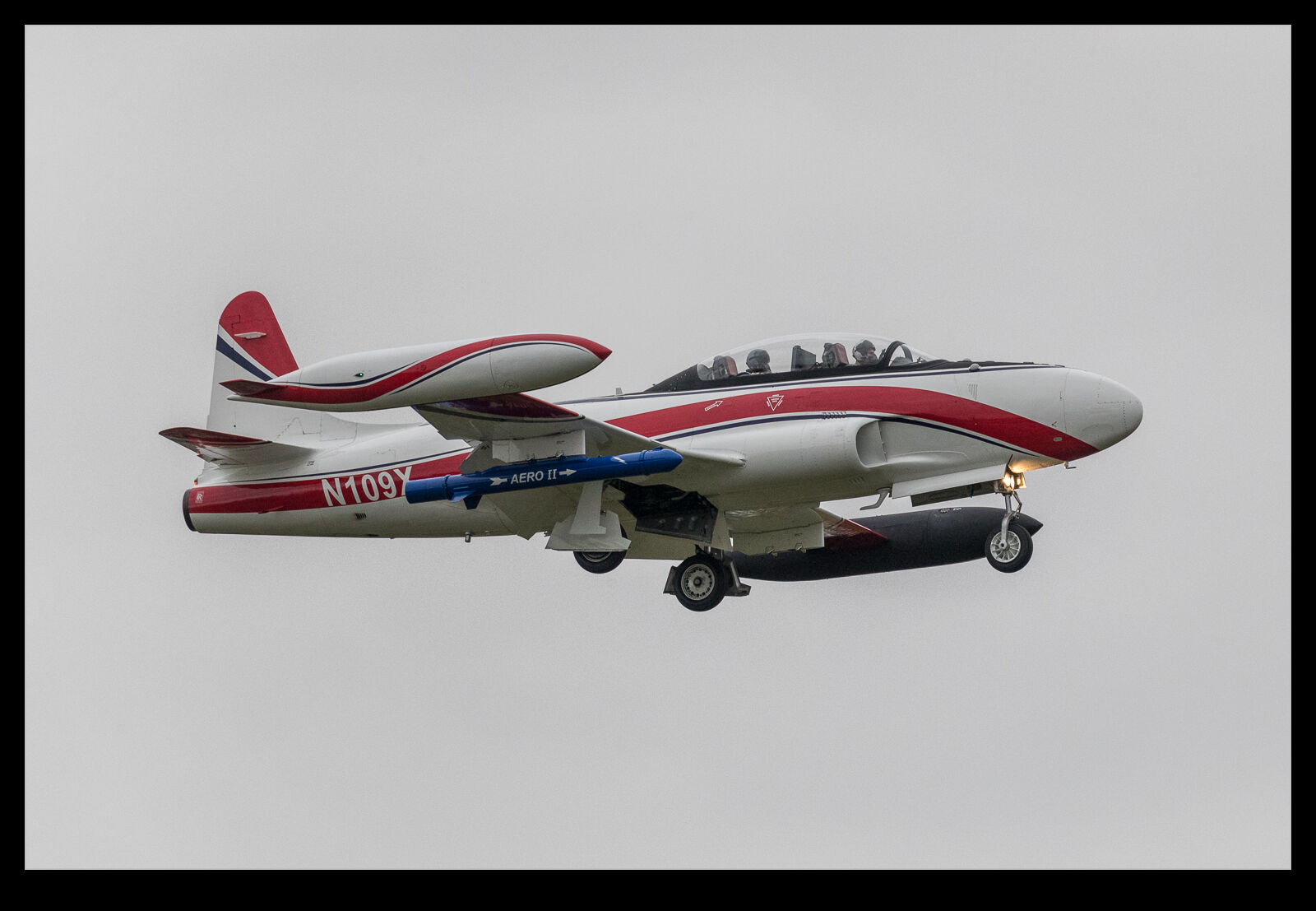 I was able to get to Boeing Field when they were completing the return journey. The tow jets were operating about ten minutes apart. The weather wasn’t great, unfortunately. There had been some nice sun a little earlier but, by the time they arrived, the clouds had rolled in. Even so, it was good to catch both jets. One of them was operating solo but the other had someone in the backseat who seemed to spot me and watched me most of the way down the approach.
I was able to get to Boeing Field when they were completing the return journey. The tow jets were operating about ten minutes apart. The weather wasn’t great, unfortunately. There had been some nice sun a little earlier but, by the time they arrived, the clouds had rolled in. Even so, it was good to catch both jets. One of them was operating solo but the other had someone in the backseat who seemed to spot me and watched me most of the way down the approach.
P-3s May Be Going But There Are Still Some
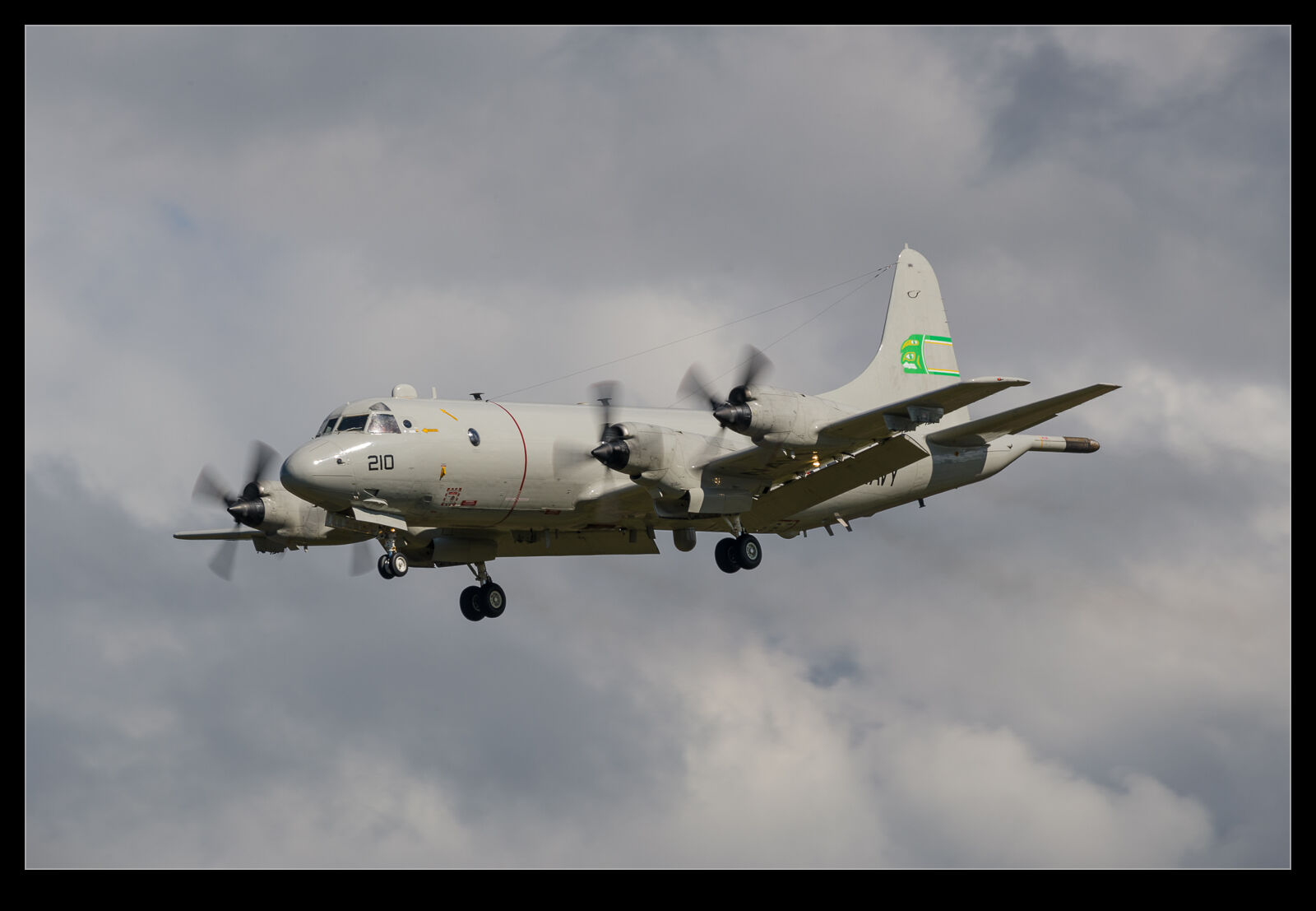 A trip to Whidbey Island for me and Paul was aimed at seeing whatever we could get there on a random weekday. In truth, though, what we really wanted was P-3s. With the Orions rapidly being replaced by P-8s, they are getting harder to find and will soon be a memory. Consequently, our fingers were crossed for some of Lockheed’s aging subhunters. It turned out we were lucky.
A trip to Whidbey Island for me and Paul was aimed at seeing whatever we could get there on a random weekday. In truth, though, what we really wanted was P-3s. With the Orions rapidly being replaced by P-8s, they are getting harder to find and will soon be a memory. Consequently, our fingers were crossed for some of Lockheed’s aging subhunters. It turned out we were lucky.
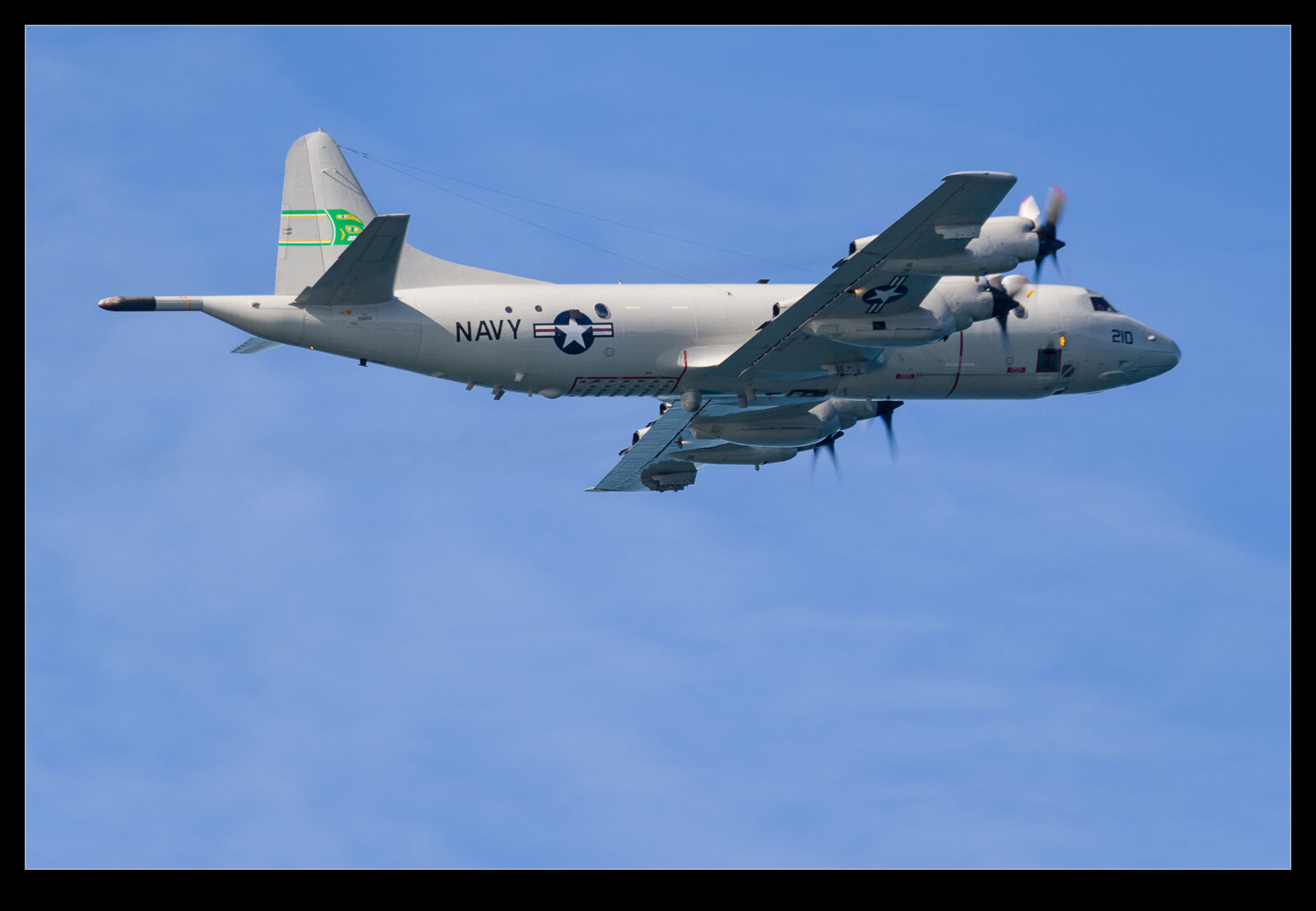 It wasn’t a busy day for the turboprops but we did get to see a few. A departure early on meant we were pleased to have had some success. We also got arrival traffic later which certainly was pleasing. Our only disappointment was that one of the planes was operating with a rare canoe under the fuselage. We saw it in the distance (when the shots are horribly distorted by heat haze) but it was operating off a different runway from that which we were near, and we never were in the right place. However, we did get some of its buddies so a successful day out.
It wasn’t a busy day for the turboprops but we did get to see a few. A departure early on meant we were pleased to have had some success. We also got arrival traffic later which certainly was pleasing. Our only disappointment was that one of the planes was operating with a rare canoe under the fuselage. We saw it in the distance (when the shots are horribly distorted by heat haze) but it was operating off a different runway from that which we were near, and we never were in the right place. However, we did get some of its buddies so a successful day out.
One More JetStar
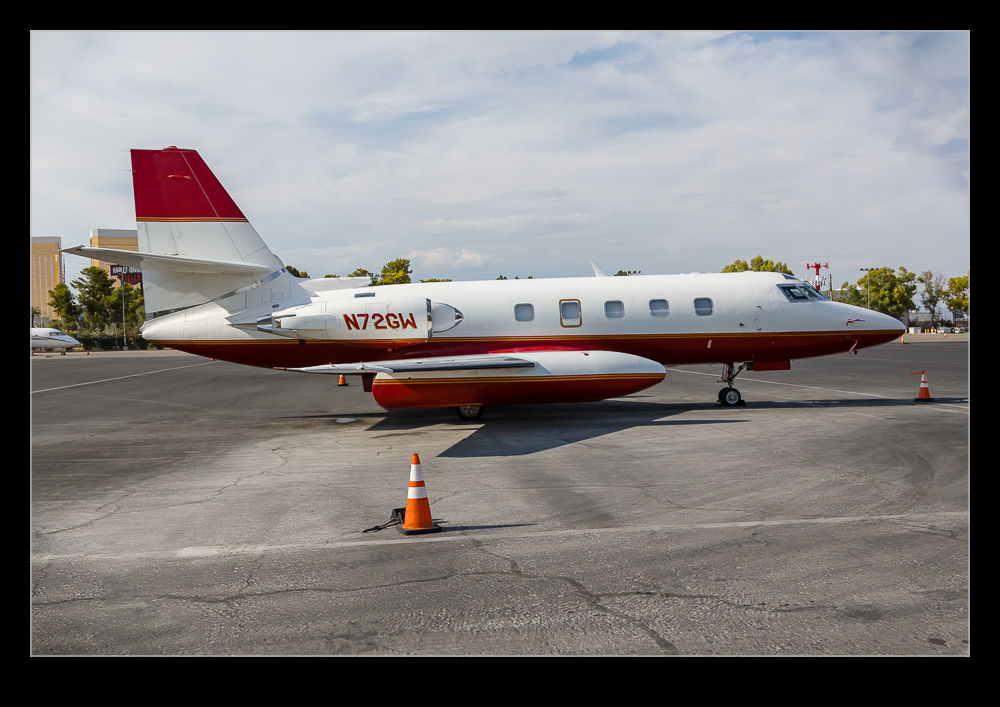 Considering how few JetStars there are around, they seem to make a disproportionate appearance on the blog. This one is another active example. My friend, Paul, was telling me how he had seen an example at McCarran on a previous visit. Just as he pointed to where it had been, a short distance away was the same jet. It was away from the fence which was helpful so I figured I should get a shot and add it to the archive. Not a great place to get good shots but better than nothing. Cheers mate!
Considering how few JetStars there are around, they seem to make a disproportionate appearance on the blog. This one is another active example. My friend, Paul, was telling me how he had seen an example at McCarran on a previous visit. Just as he pointed to where it had been, a short distance away was the same jet. It was away from the fence which was helpful so I figured I should get a shot and add it to the archive. Not a great place to get good shots but better than nothing. Cheers mate!

